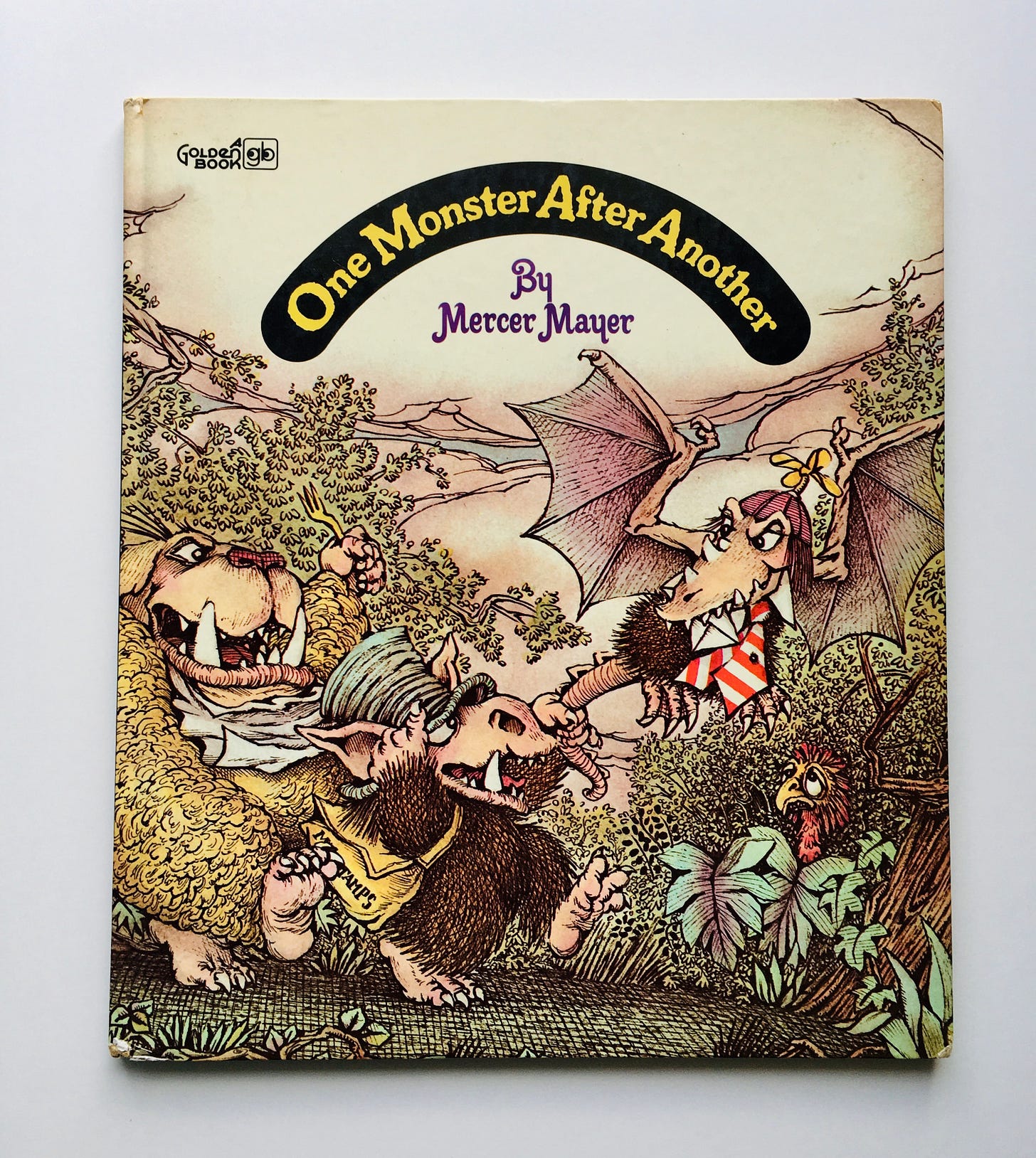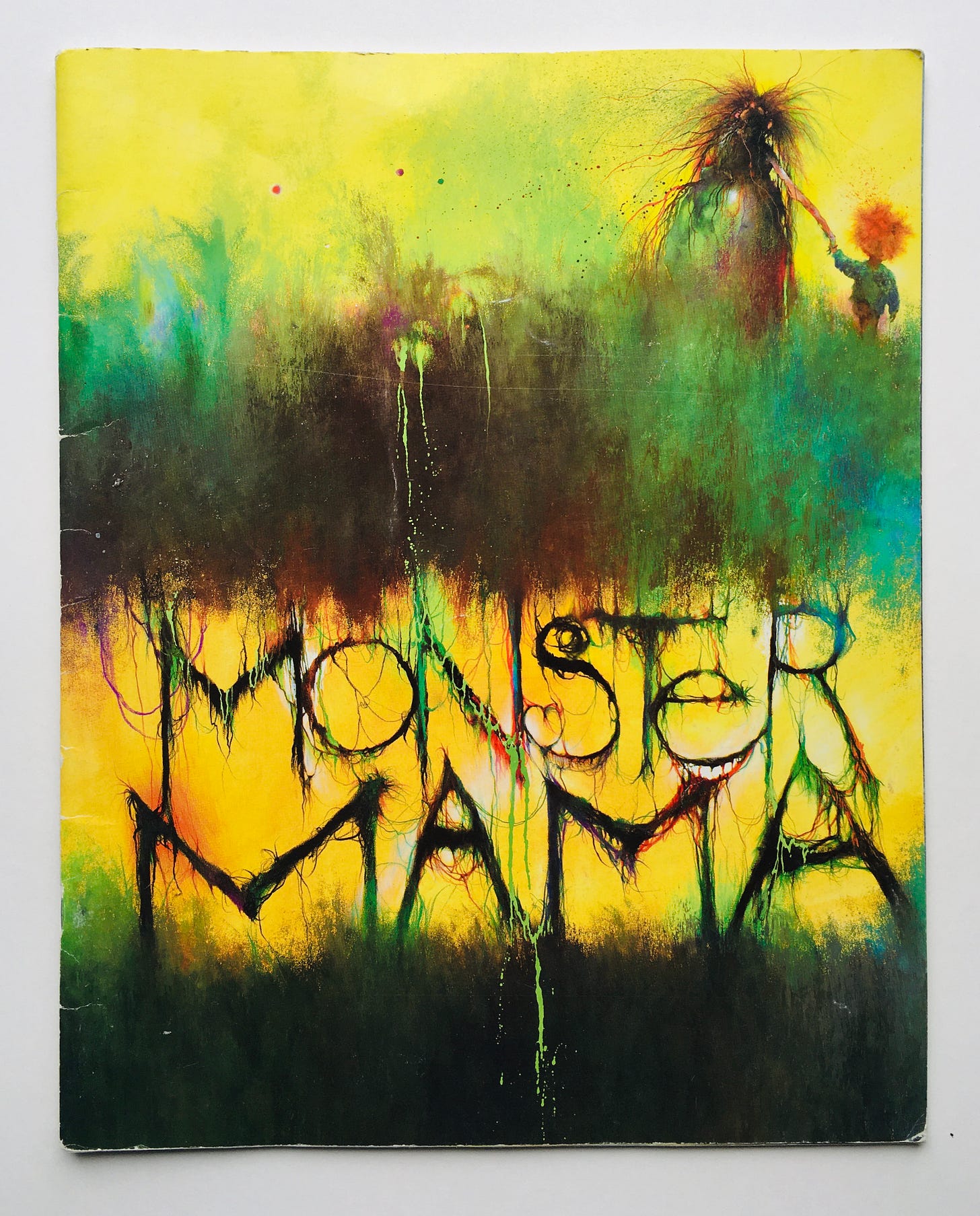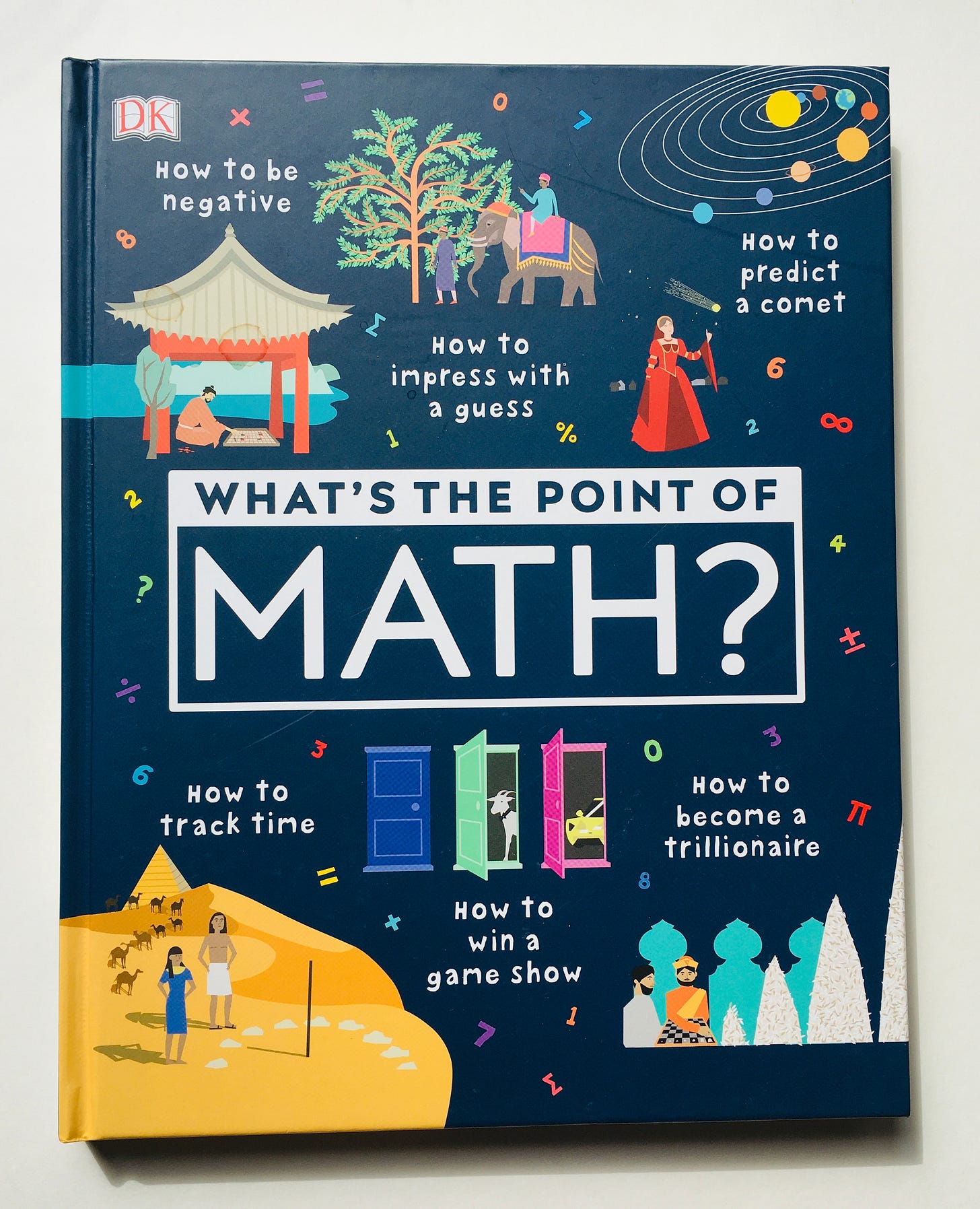Happy, happy solstice! 🕯️
Just think: after today, the light returns. The seasons spin, the wheel revolves, the cycles keep cycling: everything changes, and nothing does.
May you embrace this longest day with faith that no darkness — literal or metaphorical — lasts forever, and celebrate that it’s so.
(And remember, too: you are a gorgeous beam of light, always, no matter the day or time of year.)
Tasty Baby Belly Buttons by Judy Sierra, illustrated by Meilo So (1999)

Based on an old Japanese folktale, this is the gripping story of a town besieged by Japanese oni (a kind of ogre/troll in Japanese folklore; oni is the plural), who show up to steal all the babies because their favorite food is “tasty baby belly buttons.”
The townspeople are powerless in the face of this aggression, but one girl — a special girl, born from a melon her mother found floating down a river — is simply unwilling to accept this fate. She takes off on a journey, meeting a few animal helpers along the way, and with great wit and unmatched bravery, they fight the oni, free the babies, and bring riches back to the village.
This is a well-told, funny, riveting tale with fast-moving and evocative illustrations that doesn’t disappoint in any way. I dare you to find a child — or an adult — who won’t laugh at the idea of tasty baby belly buttons.
One Monster After Another by Mercer Mayer (1974)

“One day Sally Ann wrote a letter to her best friend Lucy Jane. She put it in an envelope and put the envelope into her mailbox.”
And then all hell broke loose and the reader has the immense pleasure of joining the letter on its wild adventure, contending with manic creatures (it’s a tie for my favorite monster — the Letter-Eating Bombanat or the Paper-Munching Yalapappus), fearsome weather, and plain old bad luck.
Outrageously fun to read aloud and to look at — Mayer’s dark and detailed images are very fun — this is a rollicking, goofy story that’s not easily forgotten. (Pictured here is my own childhood copy of this book, which I have remembered all my life.)
Monster Mama by Liz Rosenberg, illustrated by Stephen Gammell (1993)

Speaking of monsters: I don’t know about you, but I definitely feel like a monster mama sometimes, and my children would probably agree at least once in awhile. Maybe that’s why this has such appeal for kids and adults alike: there’s a bit of a monster in us all.
In this strangely tender story, Monster Mama’s insides aren’t nearly as bad as her outside, but nevertheless, she shies away from the world — she covers herself with a cloak when she drops her son off at school, she hides when he has friends over. One day, she sends him to the market to get strawberries for dessert, and as he is leaving, he is teased and bullied and eventually tied to a tree by some other boys. That’s bad enough, but the coup de gráce comes when the bullies commit the cardinal sin of talking trash about the boy’s mama. He snaps, just totally loses it (here we get to see his inner monster) until his mother comes upon all of them and sets them straight with such confidence — and grace — that they’re all able to prepare dessert and share it together.
What I love about this title is the unconditional love here, the message that not only are none of us perfect, we all have some pretty enormous character flaws — there are monstrous parts in each of us — and yet we are all still lovable and loved. That’s a message I need frequently — I mean A LOT — and I imagine children do, too.
What’s the Point of Math? by Ben Ffrancon Davies and Junaid Mubeen, illustrated by Clarise Hassan (2020)

Once upon a 2020-21 school year, while we were still experiencing Covid lockdown and I made the insane decision to homeschool my eldest child, my thoughtful grandmother bought me this book because I was going through what can only be called a strange sort of personal math recovery/rehabilitation from years of math trauma. I found it so fascinating, for several nights in a row I constantly got up from wherever I was reading to descend to our lower level to interrupt my husband’s TV watching and say, “Listen to this! Did you know this?”
Topics are broad — what’s the point of numbers and counting, shapes and measuring, patterns and sequences, data and statistics, probability and logic? — but that accurately reflects the staggering breadth and depths of maths, and though this is technically a children’s book, the ideas are both basic and very complex.
As a predominantly visual learner, the most compelling thing for me is that absolutely everything is explained visually — I not only benefitted from this, I wouldn’t have been able to understand a damn thing in this book without it — which makes it unique (though not standalone) in this category.
If this had been from the library, I would have returned it and bought it immediately — that’s how invaluable I (still) think it is. And if you’re, you know, looking for ways to suck up free time you really don’t have in the evenings or interrupt your beloveds as they (try to) go about their own leisure activities, this is the perfect thing.
Thanks for reading today 🙏
Light all your candles! Or blow them all out. (We’ll be doing the latter.)
Yours in magic, even if you have to make it, even if it looks like hocus pocus to the rest of the world,
Sarah


Adding (math joke) these all to my want to read pile! Sometimes my youngest looks up at me and asks “but you are a good witch, right?” TBD baby girl. TBD.
Thanks, as always, for the magical little space you create here.
Thank you so much for the math rec! I have a reluctant math student but he also needs to read several books about math as part of a class assignment. This looks like it may actually interest him.